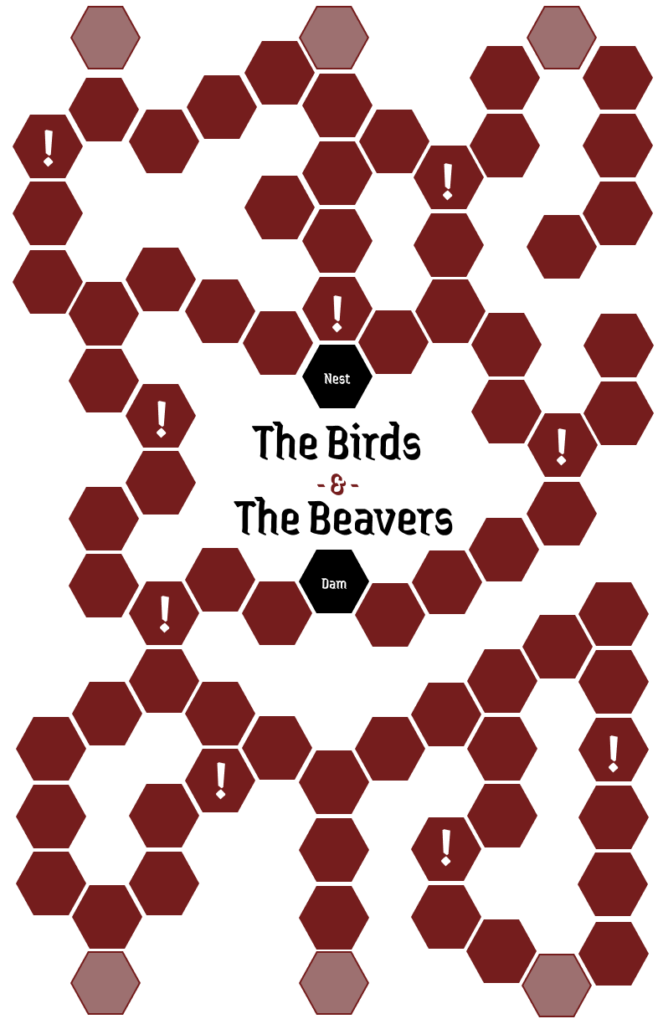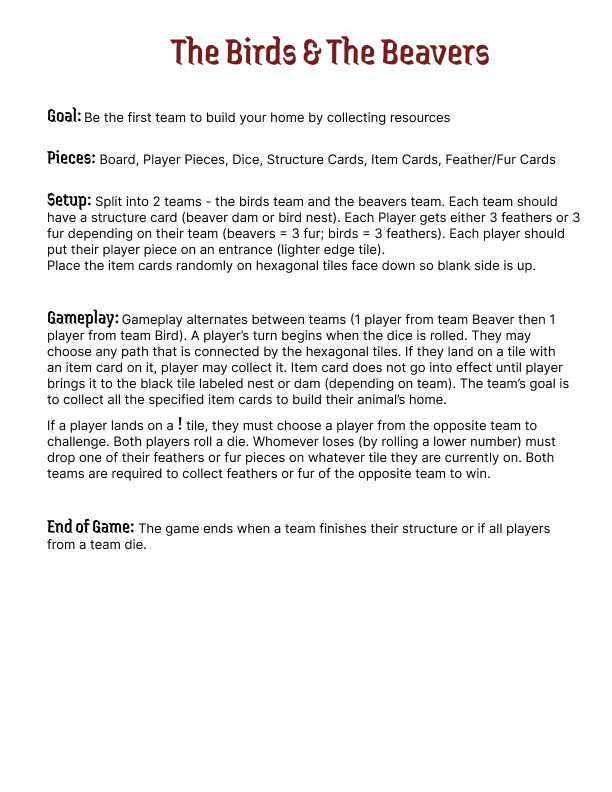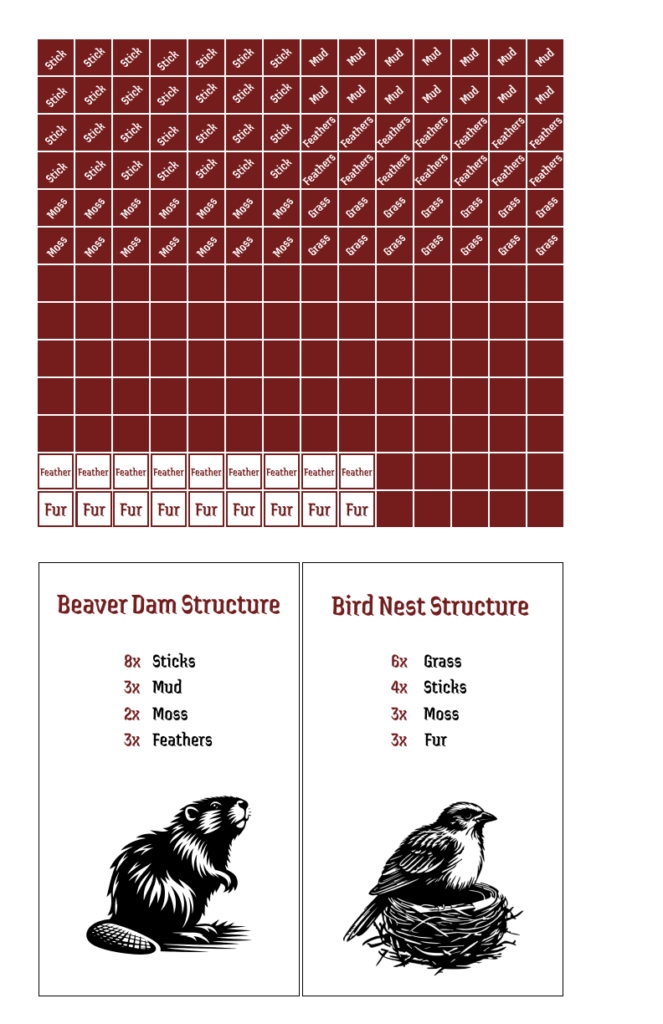Third Playtest: Final Observations and Adjustments
Feedback:
The third playtest demonstrated the near-final state of Anansi’s Web of Tricks, showcasing its refined mechanics and balanced gameplay. The reception was overwhelmingly positive, with only a few minor insights to consider:
1. Dynamic Interaction:
• Players praised the high level of interaction throughout the game. Mischief Cards and character abilities encouraged strategic thinking and constant engagement between players.
• The combination of sabotage, strategic defense, and adaptability made every round unpredictable and exciting.
2. Replayability:
• Testers highlighted the game’s replay value due to the variety of character abilities and Mischief Card effects. No two games felt alike, which encouraged players to experiment with different strategies across multiple sessions.
3. Balanced Abilities:
• Adjustments made during the second playtest to balance character abilities were well-received. Players felt that no single character was overpowered and that every ability had clear strengths and weaknesses.
• For example:
• Anansi’s card swap was impactful without feeling unfair due to its once-per-round limitation.
• Fari the Hyena’s laugh mechanic now provided a consistent and enjoyable disruption to opponents, adding humor to the gameplay.
4. Reduced Downtime:
• The streamlined Mischief Card rules significantly reduced delays during play. Targeted effects (e.g., Steal or Wild Distractions) resolved quickly, allowing the game to maintain a steady pace.
Notes from Testing Across Age Groups:
1. Learning Curve:
• Younger players (ages 10-15) adapted quickly to the mechanics, especially the use of character abilities. The thematic connection between characters and their powers resonated strongly with this group.
• Older players (ages 25+) took longer to grasp the concept of character abilities, often defaulting to playing Number Cards or Mischief Cards during their first few rounds. However, after 1-2 games, this group also began to incorporate abilities into their strategies effectively.
2. Time to Learn:
• On average, it took 2 games for individuals to fully understand the interplay between card types, Mischief effects, and character abilities. Afterward, players found the game intuitive and engaging.
3. Group Dynamics:
• Testers noted that the game excelled in creating lively, competitive group dynamics. The mix of strategy and chaos kept all players invested, even when they weren’t in the lead.



